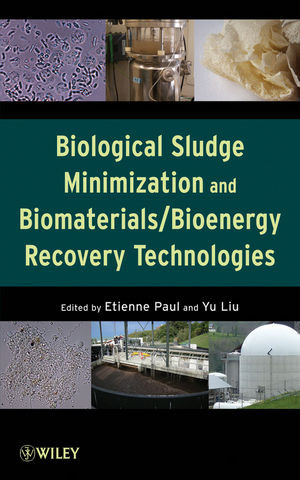Biological Sludge Minimization And Biomaterialsbioenergy Recovery Technologies Etienne Paul by Etienne Paul, Yu Liu 9780470768822, 9781118309643, 0470768827, 1118309642 instant download after payment.
A comprehensive guide to sludge management, reuse, and disposal
When wastewater is treated, reducing organic material to carbon dioxide, water, and bacterial cells?the cells are disposed of, producing a semisolid and nutrient-rich byproduct called sludge. The expansion in global population and industrial activity has turned the production of excess sludge into an international environmental challenge, with the ultimate disposal of excess sludge now one of the most expensive problems faced by wastewater facilities.
Written by two leading environmental engineers, Biological Sludge Minimization and Biomaterials/Bioenergy Recovery Technologies offers a comprehensive look at cutting-edge techniques for reducing sludge production, converting sludge into a value-added material, recovering useful resources from sludge, and sludge incineration. Reflecting the impact of new stringent environmental legislation, this book offers a frank appraisal of how sludge can be realistically managed, covering key concerns and the latest tools:
- Fundamentals of biological processes for wastewater treatment, wastewater microbiology, and microbial metabolism, essential to understanding how sludge is produced
- Prediction of primary sludge and waste-activated sludge production, among the chief design and operational challenges of a wastewater treatment plant
- Technologies for sludge reduction, with a focus on reducing microbial growth yield as well as enhancing sludge disintegration
- The use of anerobic digestion of sewage sludge for biogas recovery, in terms of process fundamentals, design, and operation
- The use of the microbial fuel cell (MFC) system for the sustainable treatment of organic wastes and electrical energy recovery
Content:
Chapter 1 Fundamentals of Biological Processes for Wastewater Treatment (pages 1–80): Jianlong Wang
Chapter 2 Sludge Production: Quantification and Prediction for Urban Treatment Plants and Assessment of Strategies for Sludge Reduction (pages 81–116): Mathieu Sperandio, Etienne Paul, Yolaine Bessiere and Yu Liu
Chapter 3 Characterization of Municipal Wastewater and Sludge (pages 117–154): Etienne Paul, Xavier Lefebvre, Mathieu Sperandio, Dominique Lefebvre and Yu Liu
Chapter 4 Oxic?Settling?Anaerobic Process for Enhanced Microbial Decay (pages 155–182): Qingliang Zhao and Jianfang Wang
Chapter 5 Energy Uncoupling for Sludge Minimization: PROS and CONS (pages 183–208): Bo Jiang, Yu Liu and Etienne Paul
Chapter 6 Reduction of Excess Sludge Production Using Ozonation or Chlorination: Performance and Mechanisms of Action (pages 209–248): Etienne Paul, Qi?Shan Liu and Yu Liu
Chapter 7 High?Dissolved?Oxygen Biological Process for Sludge Reduction (pages 249–260): Zhi?Wu Wang
Chapter 8 Minimizing Excess Sludge Production Through Membrane Bioreactors and Integrated Processes (pages 261–290): Philip Chuen?Yung Wong
Chapter 9 Microbial Fuel Cell Technology for Sustainable Treatment of Organic Wastes and Electrical Energy Recovery (pages 291–318): Shi?Jie You, Nan?Qi Ren and Qing?Liang Zhao
Chapter 10 Anaerobic Digestion of Sewage Sludge (pages 319–347): Kuan?Yeow Show, Duu?Jong Lee and Joo?Hwa Tay
Chapter 11 Mechanical Pretreatment?Assisted Biological Processes (pages 349–371): Helene Carrere, Damien J. Batstone and Etienne Paul
Chapter 12 Thermal Methods to Enhance Biological Treatment Processes (pages 373–404): Etienne Paul, Helene Carrere and Damien J. Batstone
Chapter 13 Combustion, Pyrolysis, and Gasification of Sewage Sludge for Energy Recovery (pages 405–427): Yong?Qiang Liu, Joo?Hwa Tay and Yu Liu
Chapter 14 Aerobic Granular Sludge Technology for Wastewater Treatment (pages 429–463): Bing?Jie Ni and Han?Qing Yu
Chapter 15 Biodegradable Bioplastics from Fermented Sludge, Wastes, and Effluents (pages 465–498): Etienne Paul, Elisabeth Neuhauser and Yu Liu


